The name of this Wetherspoon pub recalls the building’s original use as a charity school, known as the Blue Coat School, from the school uniform. After 1547, the charitable work of the medieval guilds was taken over by the ‘Feoffees of the Common Lands of Rotherham’. For the next 300 years, the Feoffees acted as a kind of town council. In 1708, they opened a Charity School in a rented property until 1776, when it moved into a permanent building.
Illustrations and text about ‘bluecoat schools’.
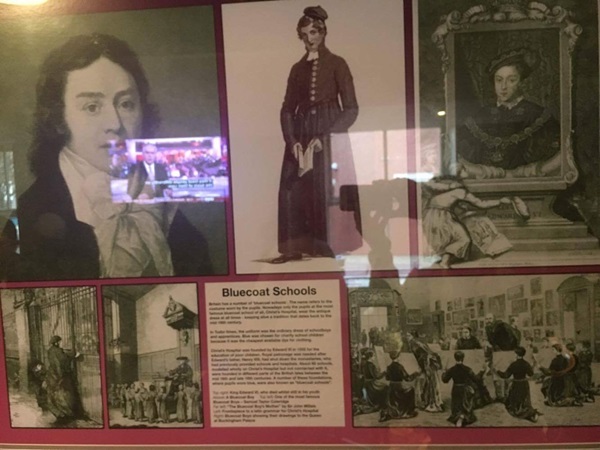
The text reads: Britain has a number of ‘bluecoat schools’. The name refers to the costume worn by the pupils. Nowadays only the pupils at the most famous bluecoat school of all, Christ’s Hospital, wear the antique dress at all times – keeping alive a tradition that dates back to the mid 16th century.
In Tudor times, the uniform was the ordinary dress of schoolboys and apprentices. Blue was chosen for charity school children because it was the cheapest available dye for clothing.
Top right: King Edward VI, who died whilst still in his youth
Above: a Bluecoat Boy
Top left: One of the most famous Bluecoat Boys – Samuel Taylor Coleridge
Far left: The Bluecoat Boy’s Mother by Sir John Millais
Left: Frontispiece to a Latin grammar for Christ’s Hospital
Right: Bluecoat Boys showing their drawings to the Queen at Buckingham Palace.
Illustrations and text about Walker iron works.
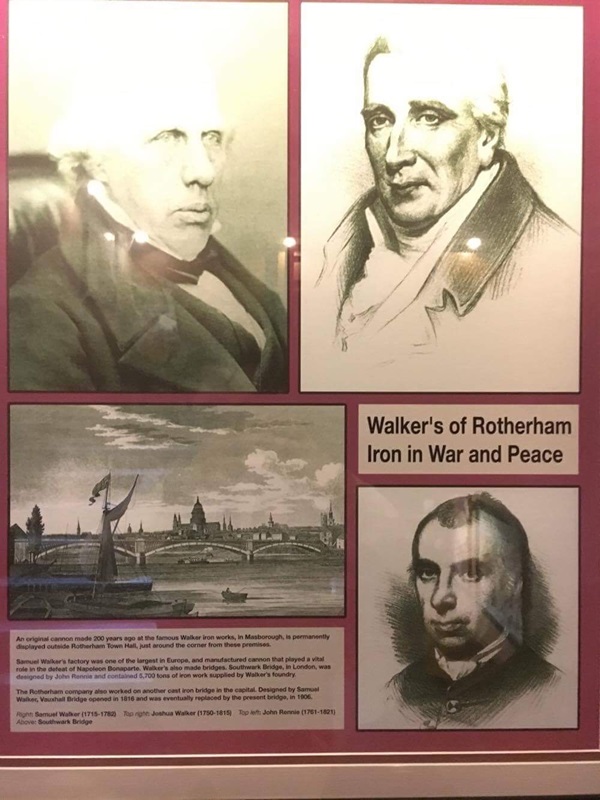
The text reads: An original cannon made 200 years ago at the famous Walker iron works, in Masborough, is permanently displayed outside Rotherham Town Hall, just around the corner from these premises.
Samuel Walker’s factory was one of the largest in Europe, and manufactured cannon that played a vital role in the defeat of Napoleon Bonaparte. Walker’s also made bridges. Southward Bridge, in London, was designed by John Rennie and contained 5,700 tons of iron work supplied by Walker’s foundry.
The Rotherham company also worked on another cast iron bridge in the capital. Designed by Samuel Walker, Vauxhall Bridge opened in 1816 and was eventually replaced by the present bridge, in 1906.
Right: Samuel Walker (1715-82)
Top right: Joshua Walker (1750-1815)
Top left: John Rennie (1761-1821)
Above: Southwark Bridge.
Photographs and text about Templeborough.
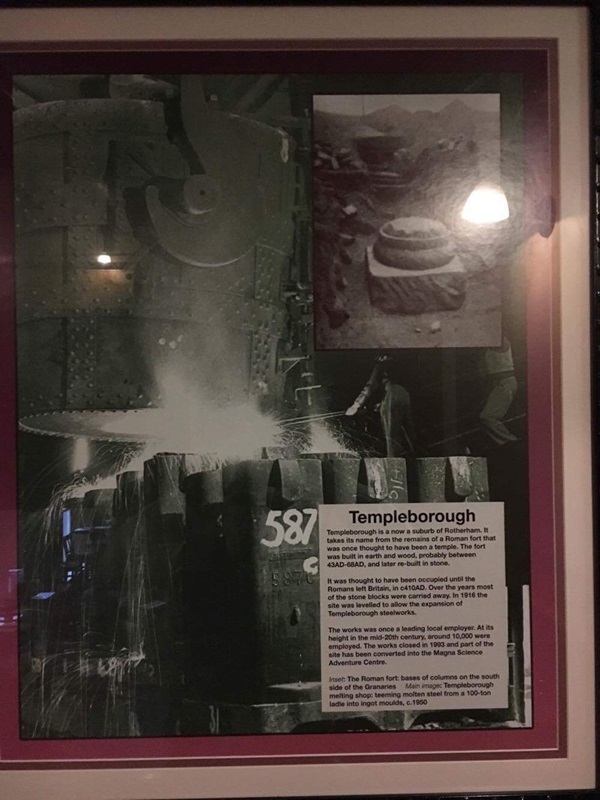
The text reads: Templeborough is now a suburb of Rotherham. It takes its name from the remains of a Roman fort that was once thought to have been a temple. The fort was built in earth and wood, probably between 43AD-68AD, and later re-built in stone.
It was thought to have been occupied until the Romans left Britain, in 410AD. Over the years most of the stone blocks were carried away. In 1916 the site was levelled to allow the expansion of Templeborough steelworks.
The works was once a leading local employer. At its height in the mid 20th century, around 10,000 were employed. The works closed in 1993 and part of the site has been converted into the Magna Science Adventure Centre.
Inset: The Roman fort; bases of columns on the south side of the Granaries
Main image: Templeborough melting shop, teeming molten steel from a 100 ton ladle in ingot moulds, c1950.
Photographs and text about Sir Herbert Austin.
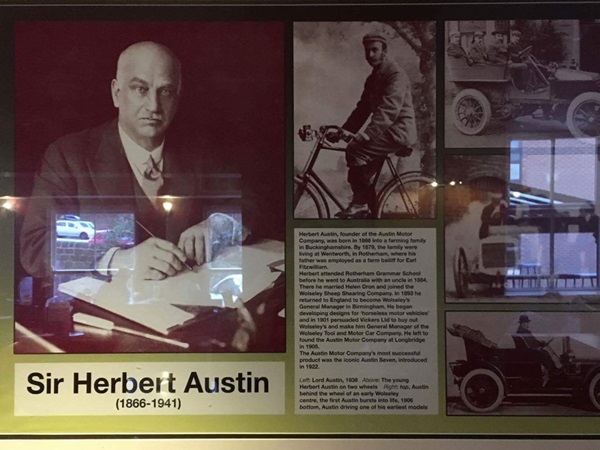
This text reads: Herbert Austin, founder of the Austin Motor Company, was born in 1866 into a farming family in Buckinghamshire. By 1879, the family were living at Wentworth, in Rotherham, where his father was employed as farm bailiff for Earl Fitzwilliam.
Herbert attended Rotherham Grammar School before he went to Australia with an uncle in 1884. There he married Helen Dron and joined the Wolseley Sheep Shearing Company. In 1893 he returned to England to become Wolseley’s general manager in Birmingham. He began developing designs for horseless motor vehicles and in 1901 persuaded Vickers Ltd to buy out Wolseley’s and make him general manager of the Wolseley Tool and Motor Car Company. He left to found the Austin Motor Company at Longbridge in 1905.
The Austin Motor Company’s most successful product was the iconic Austin Seven, introduced in 1922.
Left: Lord Austin, 1936 Above: The young Herbert Austin on two wheels
Right: top, Austin behind the wheel of an early Wolseley, centre, the first Austin bursts into life, 1906, bottom, Austin driving one of his earliest models.
A photograph, illustrations and text about the Platt family and their designs.
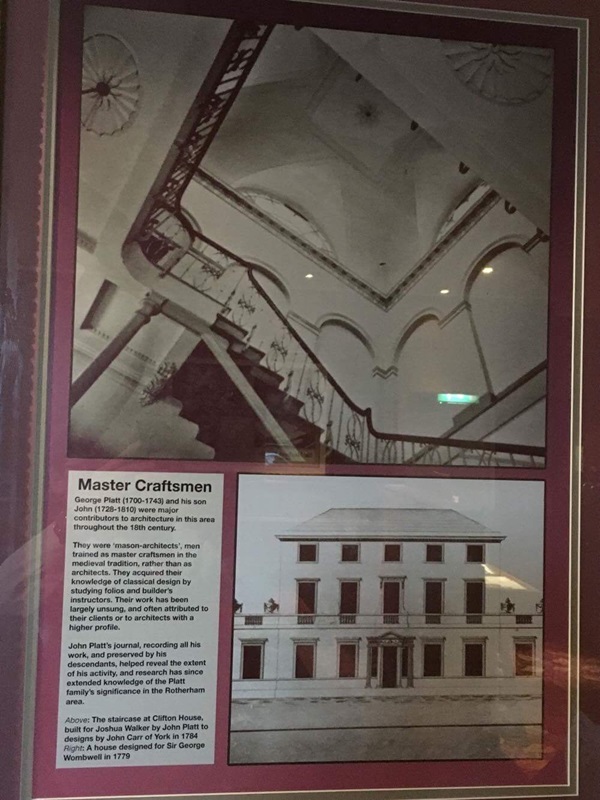
This text reads: George Platt (1700-43) and his son John (1728-1810) were major contributors to architecture in this area throughout the 18th century.
They were mason-architects, men trained as master craftsmen in the medieval tradition, rather than as architects. They acquired their knowledge of classical design by studying folios and builder’s instructors. Their work has been largely unsung, and often attributed to their clients or to architects with higher profiles.
John Platt’s journal, recording all his work, and preserved by his descendants, helped reveal the extent of his activity, and research has since extended knowledge of the Platt family’s significance in the Rotherham area.
Above: The staircase at Clifton House, built for Joshua Walker by John Platt to designs by John Carr of York in 1784
Right: A house designed for Sir George Wombwell in 1779.
An old poster for J J Habershon & Sons Ltd.
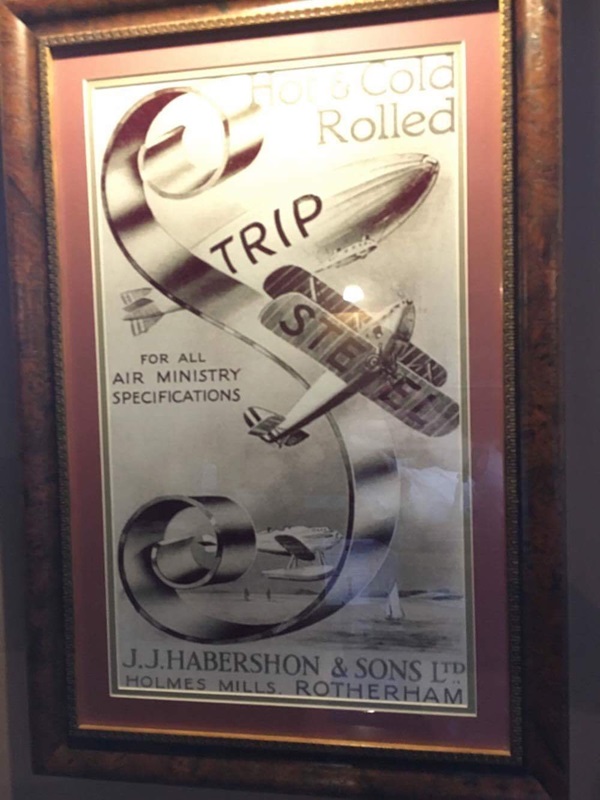
An old poster for John Baker & Bessember Ltd.
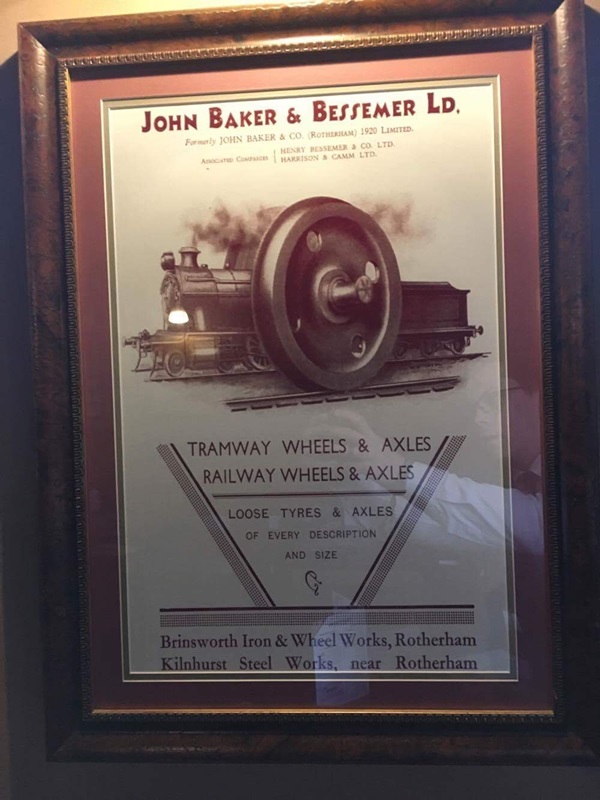
A photograph and text about Clifton Park.
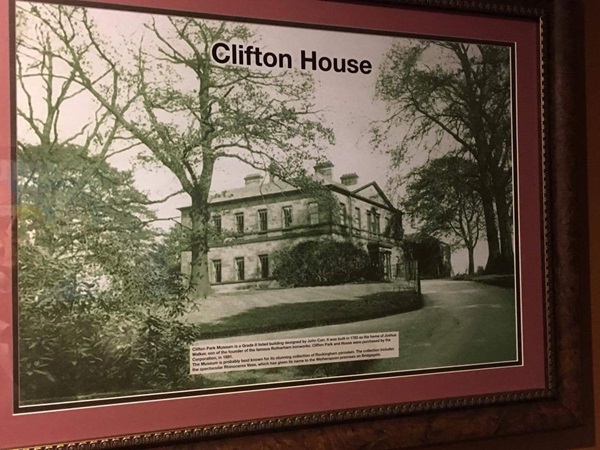
The text reads: Clifton Park Museum is a grade II listed building designed by John Carr. It was built in 1783 as the home of Joshua Walker, son of the founder of the famous Rotherham ironworks. Clifton Park and House were purchased by the corporation in 1891.
The museum is probably best known for its stunning collection of Rockingham porcelain. The collection includes the spectacular Rhinoceros Vase, which has given name to the Wetherspoon premises on Bridgegate.
Photographs and text about David Seaman.
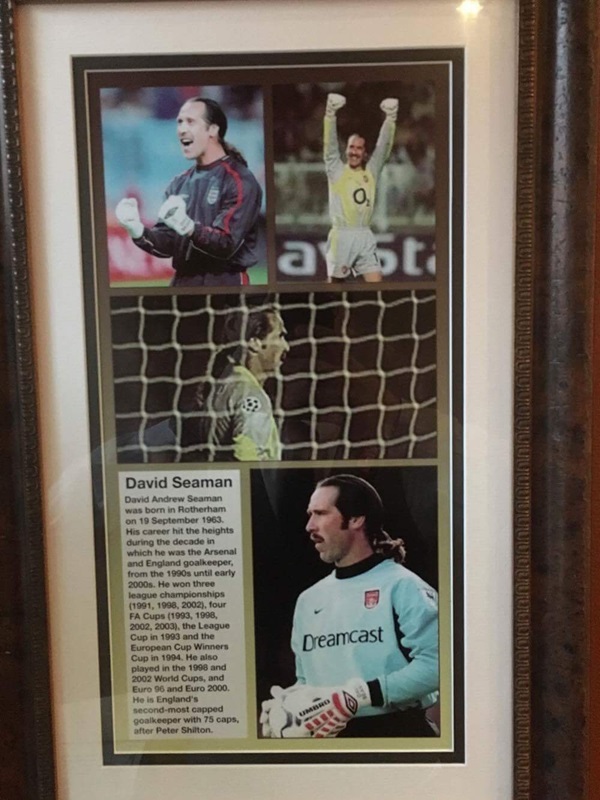
This text reads: David Andrew Seaman was born in Rotherham on 19 September 1963.
His career hit the heights during the decade in which he was the Arsenal and England goalkeeper, form the 1990s until early 2000s. He won three league championships (1991, 1998, 2002) four FA Cups (1993, 1998, 2002, 2003), the League Cup in 1993 and the European Cup Winners Cup in 1994. He also played in the 1998 and 2002 World Cups, and Euro 96 and Euro 2000.
He is England’s second-most capped goalkeeper with 75 caps, after Peter Shilton.
J D Wetherspoon gratefully acknowledges the assistance of Rotherham Metropolitan Borough Council, Archives and Local Studies Service in compiling the display of local history for The Bluecoat and their permission to use images from their collection.
External photograph of the building – main entrance.
If you have information on the history of this pub, then we’d like you to share it with us. Please e-mail all information to: pubhistories@jdwetherspoon.co.uk